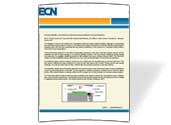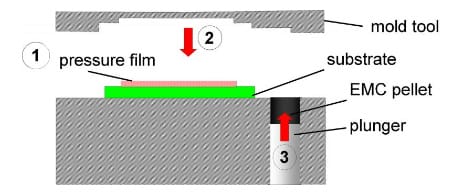Article: ECNmag.com

By Dr. Thomas Schrelr-Alt, Fraunhofer IZM, www.Izm.fraunhofer.de, and Jeffrey G. Stark, Sensor Products Inc., www.sensorprod.com
The integration of sensors and actuators into encapsulated multi-chip modules creates formidable challenges to characterizing and controlling process pressure. However, a new measurement method developed by Fraunhofer IZM shows that pressure-indicating sensor film can fully characterize the area pressure distribution on the cavity and on substrate surfaces within a mold cavity during encapsulation.
Thermo-mechanical stress from non-uniform encapsulation pressures on flip chips, quad flat no leads, sensors and thin substrates can lead to hidden damage or to long term reliability problems. Until now, pressure differences during molding were assumed to be negligible, despite the presence of filler particles in the epoxy molding compound (EMC). The Fraunhofer results show that substantial pressure differences can occur, with potential damage to components and substrates.
Conventional pressure sensors measure pressure at only a single point, not simultaneously across the entire area. They also require modifying the metal molding tool to bring out their data without short circuits. Present sensors also leaving markings on the device surface that can later interfere with pick-and-place assembly or with laser labeling.
Commercially available sensor film placed within the mold cavity produces a quick, permanent image of pressure distribution across the area during the flow of the EMC. The film requires no external connections. It neither mars nor mars the device surface. When placed between contacting surfaces the film changes color in direct proportion to the actual pressure applied.
The Fraunhofer method creates a multi layer stack consisting of the Pressurex® sensor film, and adhesive layer, a adhesive layer, and a protective polymer layer. The protective polymer mechanically restrains the film, preventing movement, swelling or degassing during measurements. This restraint allows several minutes of testing at 180°C.




